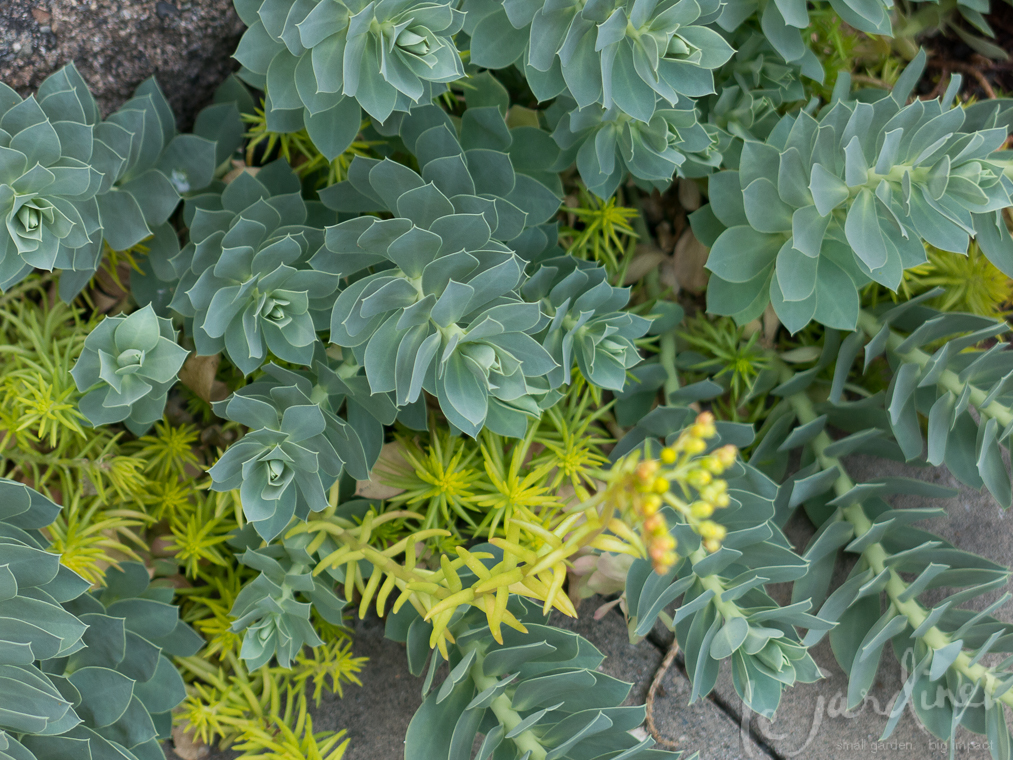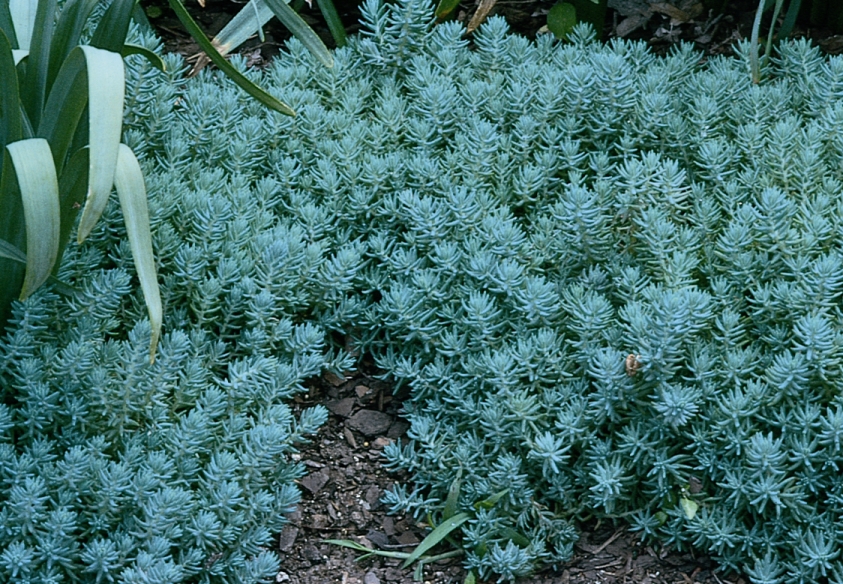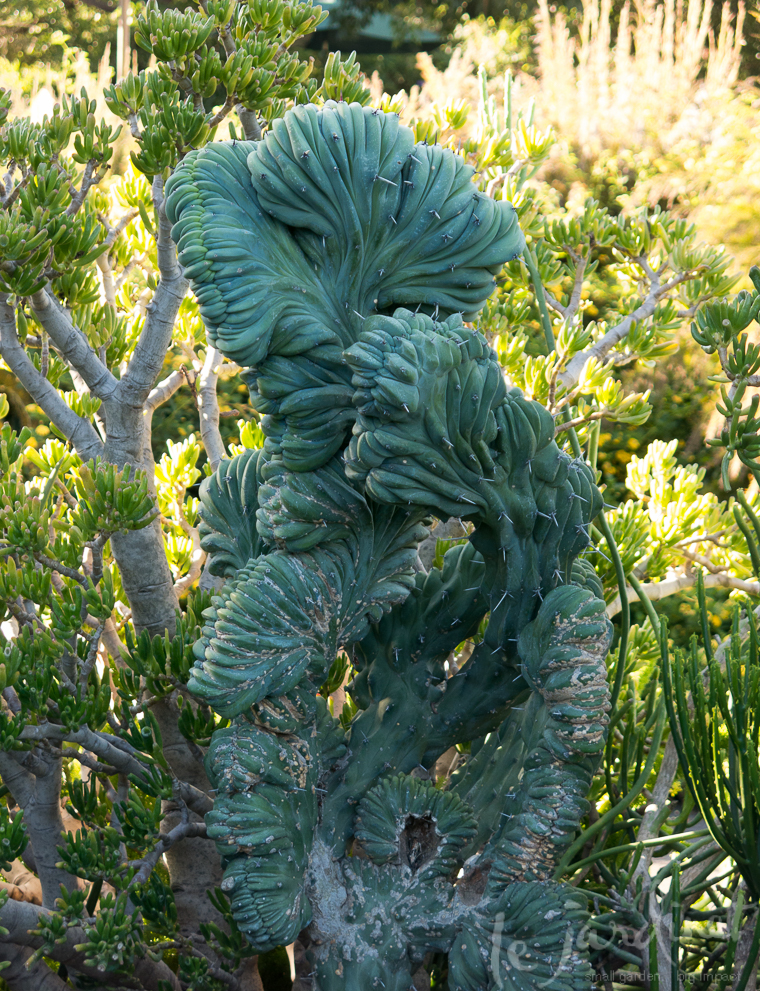Plant Whimsy
I always want the gardens I design to reflect the homeowners taste and personality. There are many ways to do this such as carrying through a key color from the interior decorating scheme or including signature art pieces in the landscape. However sometimes you can have fun with the plants themselves.
This Under The Sea garden designed the Los Angeles arboretum is a perfect example. By combining the unique metal sculptures created by local artist James B. Marshall with evocative plant forms, this underwater fantasy garden captures the imagination of visitors young and old.
Setting the scene
Cogs, chains and gears combine to create this outstanding collection of sea creatures that include seahorses, an octopus, turtle and dolphin. Such ingenuity! Marine chain such as might be used for anchors is used as an edge for the border reinforcing the aquatic theme.
This sea turtle is 25" wide; 24" long; 10" high and weighs about 75lbs. It is a clever composition of transmission gears, tractor track and steering lever while the head is a truck trailer hitch.
Skipper the dolphin is 55" in length, 46" in height, 17" in width and weighs about 50 lbs
Contact the artist directly if you are interesting purchasing any of his pieces or commissioning something special
Plant selection
We may not all be able to grow these plants (too wet, too cold…) but we can still recreate this look if we understand what to look for. The idea is to seek out plants whose color, shape and texture suggests coral or seaweed.
Cacti and succulents have been used to great effect in this design but most of these would only be suitable for an annual display in colder climates. What else could be used to represent coral or seaweed? Here are a few ideas.
The spurge (Euphorbia) family offers many possibilities. Fen's Ruby (Euphorbia cyparissias 'Fen's Ruby') forms a feathery cushion of finely textured semi-evergreen foliage that opens burgundy and matures to green. Chartreuse flowers add to the display in spring, Be warned that this plant can be a thug – check to see if it is invasive in your area before you let it loose. This may be best for a container display.
Donkey tail spurge (Euphorbia myrsinites) is stiffer, more blue, has gorgeous succulent foliage and is not quite so thuggish as its cousin Fens Ruby although is also listed as an invasive species in some states.
For a similar look to Fen's Ruby without the concern of skin irritation common to the spurge family or its invasive tendencies consider Blue Haze stonecrop (Sedum reflexum 'Blue Spruce')
This cold hardy succulent (USDA zones 3-11) is typically evergreen, drought tolerant and tough!
Certain varieties of hebe may also work for cushion forms e.g. Red Edge and there are lots more cold hardy sedums to investigate.
Now for some of the truly unique plants that have been used to represent splays of coral or broad seaweed forms. Do leave me a comment if you can identify these!
So what can we cold climate gardeners use? One suggestion is to look for fasciated forms of everyday plants; either those that just happen occasionally on a single stem within the plant or genetic forms that have mutated and been propagated to select for that feature. Fasciated stems are produced due to abnormal activity in the growing tip of the plant. Often an abnormal number of flowers are produced on affected stems; something I noticed on one of my Paprika yarrow plants this summer.
Ferns with fasciated tips often have names such as ‘monstrosa’ and ‘cristata’ and are highly collectable plants. Look out for crested hart's tongue fern for example. There are also some fasciated conifers such as the crested Japanese cedar (Cryptomeria jap0nica 'Cristata'). These would all be excellent candidates for a seascape.
On a recent garden tour in Portland I came across this fasciated form of a spurge which I believe to be gopher spurge Euphorbia rigida.
Note how only one stem was affected.
The finishing touches
To complete the scene I noticed a number of volcanic rocks used throughout the 'sea bed' and lava rock used as a mulch. There was also a few special specimen type plants, included for their unusual color or shape.
Now it's your turn
Have I got you thinking? Next time you're looking at plant images or walking through the nursery perhaps you'll see a sea creature waiting to be discovered! Be sure to post photos on my Facebook page or leave me comments below. Imagination starts now………………………











